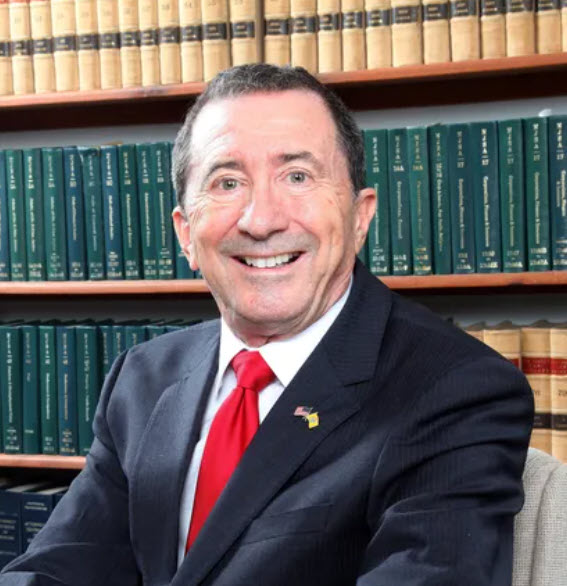1849:?? Defeated in politics and worn out from his grueling rural medical practice, ?52 year old Dr. Jonathan Pitney gets idea to build health resort on northern half of a ?near empty sand-dune island in Atlantic County, ?accessible only by rowboat.
1851: After long search for financial backers for this project,? Pitney finally persuades 30 year old Samuel? Richards of Hammonton to partner with him.?? Richards is from ?a very wealthy, long established family that owns ?glass, brick, and iron factories ?and a quarter million acres of land throughout South Jersey?? The two form two new corporations?a ?Camden-Atlantic Land Company?? to ?buy land and build a hotel and health resort? on the island.? And a new ?Camden ?Atlantic Railroad Company?? to buy a strip of land running to Camden, and build a new railroad line to take people from Philadelphia to the island?while passing through Richards? farms and factories near Hammonton.
1852:?? Pitney and Richards raise money for both corporations by selling stock to friends, wealthy investors, and members of the public.??? Both corporations buy 1,000 acres on the island for $5 to $10 per acre.?? The railroad corporation buys a narrow, 60 mile strip from the island ?through? deserted pine forests? to Camden for almost nothing.
1853:? The two corporations begin construction of? both the 600 room hotel? on the island, and? 60 miles od ?railroad tracks and bridges to Camden.
1854:?? Pitney? and Richards get state permission? for their property on the island to break away from Egg Harbor Township, and be a separate city with its own local government.??? It takes the name ?Atlantic City?.?????? Both the hotel and the rail line are finished and open for business in September.??? A ferry connects the new rail line to Philadelphia.???? Tourists start coming at the beginning of the next summer season.
1858:?? Swarms of mosquitoes and greenhead flies torture visitors, and threaten to ruin the project.?? Pitney and Richards solve the problem by leveling the sand dunes and filling in low lying areas with stagnant water.
1870:? After 16 years, ?both the land and railroad corporations are profitable and paying big dividends to? shareholders.??? Pitney died at age 72 the year before.? ?More than 400,000 people are paying for round trips to Atlantic City each year.??? The city builds a wooden ?boardwalk? so visitors can enjoy the ocean view without tracking sand into the hotel and railroad cars.
1875:?? Most shareholders of the land and railroad companies are content to do nothing but collect dividends on their stock.?? But Sam Richards wants to modernize and speed up the railroad, and build Atlantic City into a world class resort.?? In 1875, after years or arguing, ?Sam Richards quits the railroad corporation forms a one.?? Richards? new railroad company ?buys its ?own 60 mile strip of land, and builds a modern, high-speed second railroad to Philadelphia in just 0 days.? The new trains go from Camden to Atlantic City in less than an hour, and round-trip fares are cut from $3 to $1.? This doubles the number of visitors to Atlantic City.
1875-1903:?? Dozens of new hotels, bars, gambling halls, theaters, amusement parks are built every year by thousands of newly freed black slaves from the South and Jewish, Italian, and Irish immigrants from Europe, and displaced farmers from all over America.?? They live in tent cities and do construction during the winter and work tourist businesses during the summer.?? Many quickly earn and save enough to own their own homes and businesses.? ??Professional lifeguards begin protecting beach in 1881.? Boardwalk and much of city destroyed by September hurricane in 1889?but city rebuilds and opens for business by next summer season. ??Modern electric trolley service begins 1893.? Modern hospital? opens 1898.? ?In 1899, all beachfront property owners? except for the owners of six ?ocean piers voluntarily? give up their rights to build on the ocean side of the Boardwalk, so beach can become public park.?? By 1903, Atlantic City has more than 30,000 full time residents, and millions of visitors each year.
1897:?? John Young builds a ?Million Dollar Pier? from the Boardwalk to a half-mile out at sea.?? When the pier is destroyed by fire in 1902, he rebuilds it In time for next summer season.
1901:? Atlantic City builds modern, fully integrated free public high school ?at Ohio and Pacific Avenues, complete with auditorium and indoor gym and track.?? It is so respected for its sports and academics that many foreign diplomats in Washington D.C. buy houses in Atlantic City so their kids can attend.
1903:??? Atlantic City builds magnificent 9,000 square foot public library with matching funds from billionaire steelmaker Andrew Carnegie–one of 36 such libraries in the nation.
1907:?? ?Progressives?? take control of state government in Trenton.??? They pass new state laws that make gambling, prostitution, and Sunday liquor sales illegal.? Atlantic County Sheriff Enoch ?Nucky? Johnson works with local mayor and police to make sure these laws are not enforced in Atlantic City.?? When state officials arrest ?hotel and bar owners for breaking these laws in Atlantic City, ??Nucky? makes selects their ?friends? to be on the juries so the charges are dismissed.
1903-1914:?? Atlantic City has new building boom of modern, fireproof, brick and steel skyscraper luxury hotels.??? In September, 1903, the old wooden Chalfonte Hotel was demolished, and construction on 8 story brick and steel? 8 story replacement begins in November.?? Construction is completed within six months, and new hotel opens for July 4 weekend of 1904.?? The brick and? steel Marlborough, Blenheim, and Traymore hotels were built in much the same way.
1911:? Atlantic City opens ?world?s first municipal airport
1914:?? The best and brightest inventors, innovators, and entertainers flock to Atlantic City.? Inventor Thomas Edison showed off his inventions which included electric lights, movies, and phonograph records.?? Heinz filled a whole ocean pier with samples of its latest food products.??? Blues singer Bessie Smith is a regular performer.?? John Phillip Sousa?s band plays his latest marches.?? The most popular shows and plays open on the Atlantic City Boardwalk before going to Broadway.
1914:?? Atlantic City?s full time population grows to 51,000 with tens of millions of vacation and convention visitors each year.?? Of the 16 fastest trains in the world, 13 run between Atlantic City and Philadelphia taking less than an hour with speeds of more than 100 mph.


Easy read, lots of great information for anyone researching Atlantic City. I had no idea the Richards family from Batsto was involved in Atlantic City.
My search started with interest in the Pitney House in Absecon and to learn about Dr. Pitney’s “health resort” he built in Atlantic City. Learning how the land became buildable and who built it (had noticed many Italians living in Galloway at one address in the 1900 census( (assumed they were farm labor, now wonder if they were building Atlantic City) (freed slaves from the south – just didn’t think about their migration north to help build Atlantic City…I thought it was more for servicing the hotel industry) ), how the greenheads were controlled, why the train tracks were built between Camden and Atlantic City and had one of the fastest trains in the world (grandfather worked for the railroad) etc. etc.. the beginning of the boardwalk and the storm of 1889 with notation that the city was wasted and hurriedly rebuilt for tourism…and the population…..wow….no wonder it was called the playground of the world with millions of people visiting! One of the top libraries and school was built in 1901 attracting wealthy men to build homes (no wonder there are so many huge old homes) …I could go on and on. Now to learn more about my beloved Lucy the Elephant and how she affected growth to the area! Thank you to the writer and publisher! Sorry for my rambling sentences…I’m just excited!
Just learned that besides creating Atlantic City in 1854, Jonathan Pitney was a delegate to the NJ State Constitutional Convention of 1844. There, he helped write a new state constitution designed to control “systematic corruption” and “unsustainable” state government debt.